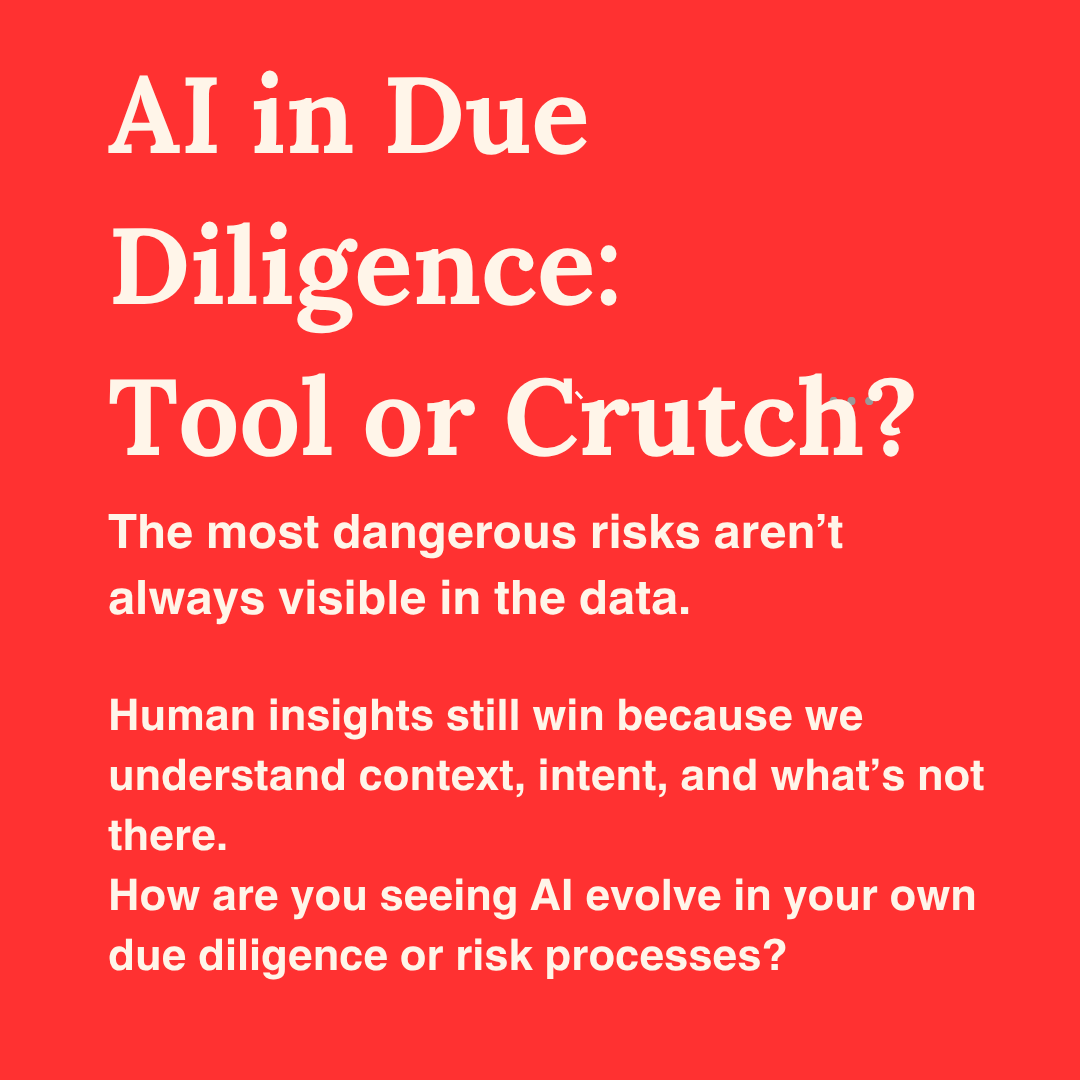AI in Due Diligence: Tool or Crutch?
Last week I posted about the limits of AI in high-stakes background investigations. The post sparked some strong reactions—which is great. It means this conversation matters.
Let me clarify something: I’m not anti-AI. In fact, I want AI to succeed in our field. I’ve reviewed dozens of AI-driven tools. Some are game-changers for automating parts of the process—pulling filings, matching entities, even spotting inconsistencies.
But here’s the problem: The most dangerous risks aren’t always visible in the data.
The lawsuit that was filed but then quietly settled under seal
The “clean” résumé that omits three failed ventures and a bankruptcy
The shell entity hiding a sanctioned individual in a separate jurisdiction
That’s where human insight still wins. Not because we’re faster—but because we understand context, intent, and what’s not there.
I’m all for using AI to enhance diligence. But when the stakes are high—like vetting a target before a $100M acquisition—I’ll still put my trust in trained eyes over a fast algorithm.
The best due diligence teams will be hybrids: humans empowered by smart tools, not replaced by them.

